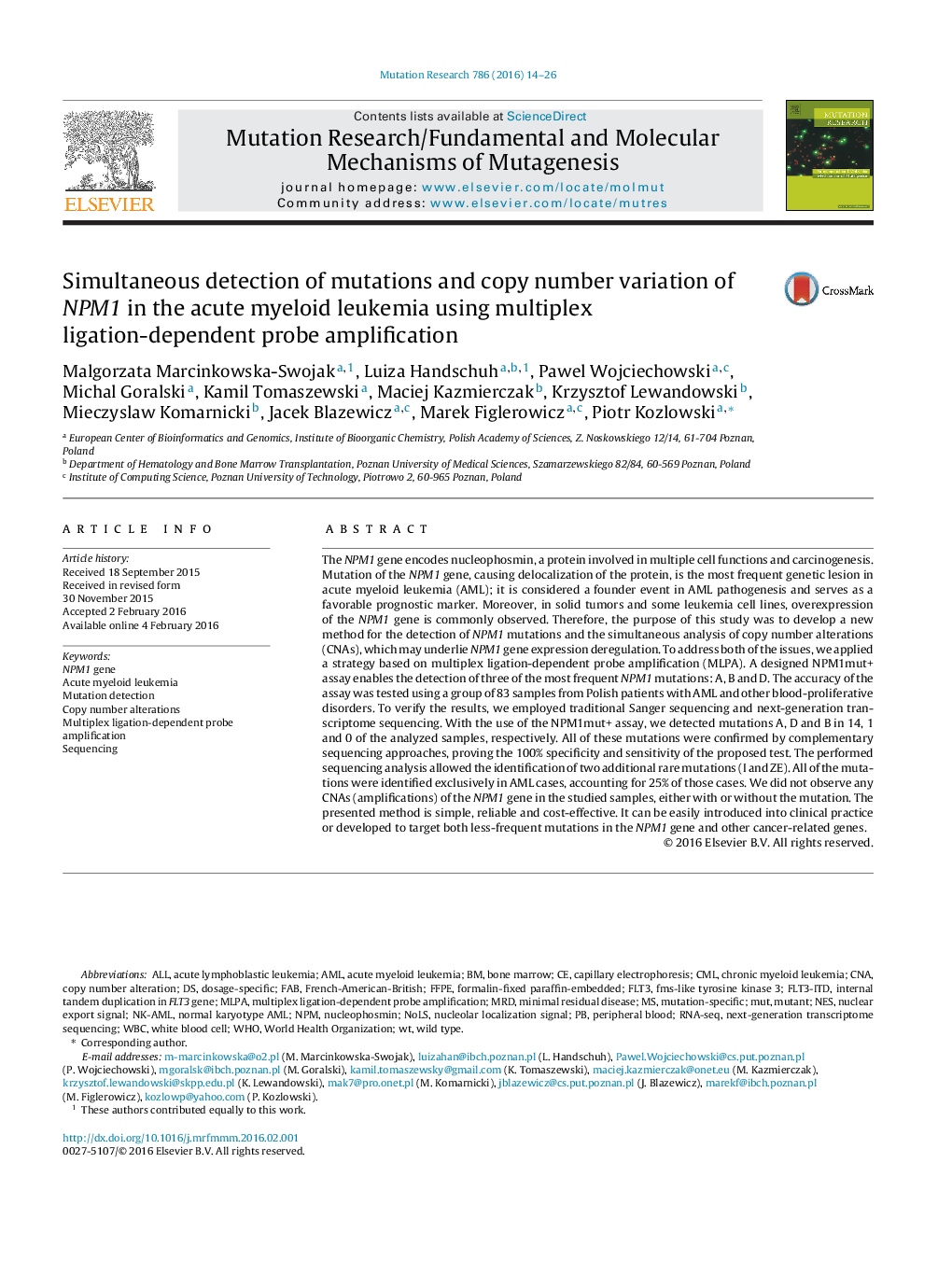| Article ID | Journal | Published Year | Pages | File Type |
|---|---|---|---|---|
| 2146161 | Mutation Research/Fundamental and Molecular Mechanisms of Mutagenesis | 2016 | 13 Pages |
•The NPM1 mutations were detected exclusively in AML accounting for 25% of cases.•The NPM1 gene did not reveal any copy number alterations.•The NPM1mut+ assay is a reliable test for the analysis of mutations and CNA in NPM1.
The NPM1 gene encodes nucleophosmin, a protein involved in multiple cell functions and carcinogenesis. Mutation of the NPM1 gene, causing delocalization of the protein, is the most frequent genetic lesion in acute myeloid leukemia (AML); it is considered a founder event in AML pathogenesis and serves as a favorable prognostic marker. Moreover, in solid tumors and some leukemia cell lines, overexpression of the NPM1 gene is commonly observed. Therefore, the purpose of this study was to develop a new method for the detection of NPM1 mutations and the simultaneous analysis of copy number alterations (CNAs), which may underlie NPM1 gene expression deregulation. To address both of the issues, we applied a strategy based on multiplex ligation-dependent probe amplification (MLPA). A designed NPM1mut+ assay enables the detection of three of the most frequent NPM1 mutations: A, B and D. The accuracy of the assay was tested using a group of 83 samples from Polish patients with AML and other blood-proliferative disorders. To verify the results, we employed traditional Sanger sequencing and next-generation transcriptome sequencing. With the use of the NPM1mut+ assay, we detected mutations A, D and B in 14, 1 and 0 of the analyzed samples, respectively. All of these mutations were confirmed by complementary sequencing approaches, proving the 100% specificity and sensitivity of the proposed test. The performed sequencing analysis allowed the identification of two additional rare mutations (I and ZE). All of the mutations were identified exclusively in AML cases, accounting for 25% of those cases. We did not observe any CNAs (amplifications) of the NPM1 gene in the studied samples, either with or without the mutation. The presented method is simple, reliable and cost-effective. It can be easily introduced into clinical practice or developed to target both less-frequent mutations in the NPM1 gene and other cancer-related genes.
Graphical abstractFigure optionsDownload full-size imageDownload as PowerPoint slide
